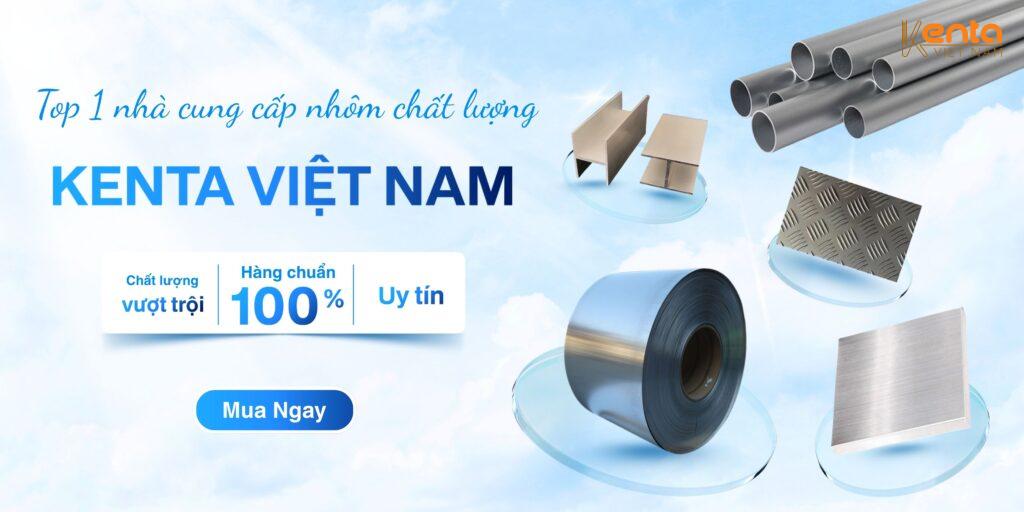Knowledge, Technology
Triclad with LR certification — Material solution for the marine and heavy industry
Triclad with LR certification is increasingly trusted by investors and contractors because it ensures technical performance and facilitates acceptance and inspection. LR (Lloyd's Register) certification confirms the manufacturing process and material performance, helping to reduce risks when applied in marine environments and highly corrosive industries. This article provides an in-depth analysis of the nature, performance, acceptance process, and technical recommendations when using LR-certified Triclad, while also clarifying Kenta VietNam role in the supply chain.
What is LR-certified Triclad and its multi-layer structure
LR-certified Triclad is a multi-layer material designed to combine the best properties of each layer: a corrosion-resistant surface layer, a core layer providing mechanical properties, and a base layer supporting the structure. Triclad being LR-certified means that all processes of material selection, layering, surface treatment, and quality inspection have been evaluated according to strict international standards. The three-layer structure allows Triclad to operate stably in seawater environments, where electrochemical corrosion and mechanical abrasion coexist, while reducing the need for replacement compared to traditional single-layer materials.
Corrosion resistance and mechanical performance in practice
When LR-certified Triclad is applied on ship decks, outer bulkheads, or in piping systems at ports, the technical benefits are evident in two aspects: the surface layer reduces the corrosion rate and the core layer maintains its mechanical properties under load. Triclad allows designers to reduce the thickness of structural parts compared to traditional materials while still ensuring safety. At the same time, welds and connection details are designed according to the manufacturer's recommendations to limit stress concentration points and reduce the risk of defects due to localized corrosion.
LR inspection process and mandatory documentation
LR certification is proof of the quality control chain from raw material to finished product. The inspection process typically includes verifying chemical composition, mechanical testing, corrosion testing according to relevant standards, and checking the manufacturing process. When purchasing Triclad with LR certification, the buyer needs to request complete documentation such as the Mill Test Certificate, corrosion test report, LR inspection report, and information about the production batch. Comparing the figures in the documentation with independent sample testing when necessary will reduce the risk of quality ambiguity and ensure acceptance in international inspections.
Notes on receiving and accepting goods
When a batch of Triclad arrives at the construction site, checking the accompanying documentation and measuring dimensions, thickness, and surface appearance is a mandatory step. For important items, mechanical and corrosion sample testing should be performed at an independent laboratory before mass installation. Triclad should be stored in a warehouse away from direct salty and humid environments; covering, padding, and controlling storage time will help maintain the performance of the surface layer before construction.
Construction, welding, and post-weld treatment
Constructing LR-certified Triclad requires processing and welding procedures to be carried out according to technical guidelines. The heat-affected zone during welding needs to be limited to preserve the properties of the surface layer; welding wire and welding parameters must be selected according to recommendations to avoid reducing corrosion resistance. After welding, non-destructive testing of joints and surface treatment at the weld are necessary to ensure continuous corrosion protection. Adhering to these steps helps maximize the long-term benefits of Triclad in marine environments.
Typical applications and economic benefits
LR-certified Triclad is suitable for ship decks, side bulkheads, platforms, pipelines, and components directly exposed to seawater or corrosive chemicals. Economically, although Triclad material may have a higher initial cost than some other materials, when calculating the life cycle cost, the benefits from reduced maintenance, extended replacement cycles, and reduced downtime for repairs often offset the initial cost. Shortening maintenance time also brings operational benefits and minimizes the risk of operational disruption.
The role of Kenta Vietnam in the Triclad LR supply chain
Kenta Vietnam acts as a bridge between manufacturers and domestic customers, providing LR-certified Triclad along with technical consultation. Kenta supports verifying LR documents, advising on selecting the appropriate Triclad type for working conditions, proposing welding and surface treatment methods, and organizing acceptance and inspection at the port. Choosing Kenta helps investors save effort in quality control, reduce the risk of purchasing products without certificates, and ensure construction progress.
LR-certified Triclad is an effective material solution for the marine industry and industrial applications requiring high corrosion resistance combined with mechanical durability. Understanding its characteristics, inspection procedures, and adhering to construction steps are necessary conditions to maximize actual performance. Collaborating with a technically capable supplier like Kenta VietNam will help optimize life-cycle costs, ensure documentation, and increase the likelihood of acceptance in international projects.
————
KENTA VIETNAM – QUALITY BUILDS TRUST
![]() Main office: No. 22, Phung Cong service area, Phung Cong Commune, Hung Yen province
Main office: No. 22, Phung Cong service area, Phung Cong Commune, Hung Yen province
![]() Warehouse No. 1: Ngo Yen Hamlet, Hong An Ward, Hai Phong City (at the foot of Kien Bridge)
Warehouse No. 1: Ngo Yen Hamlet, Hong An Ward, Hai Phong City (at the foot of Kien Bridge)
![]() Warehouse No. 2: No. 22, Phung Cong service area, Phung Cong Commune, Hung Yen province
Warehouse No. 2: No. 22, Phung Cong service area, Phung Cong Commune, Hung Yen province
![]() Phone: 0972 887 106 – 0961 909 992
Phone: 0972 887 106 – 0961 909 992
![]() Email: contact@kentavietnam.com
Email: contact@kentavietnam.com
![]() Website: kentavietnam.com
Website: kentavietnam.com




















